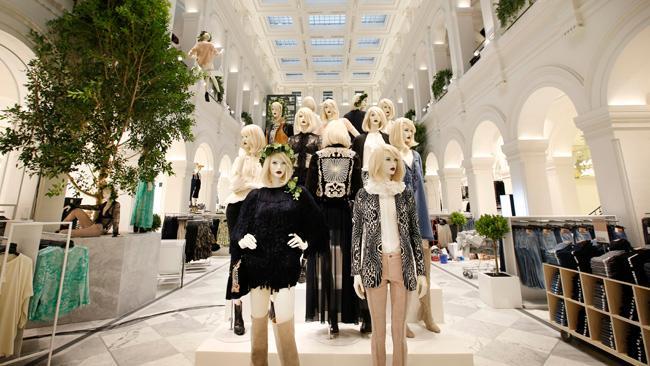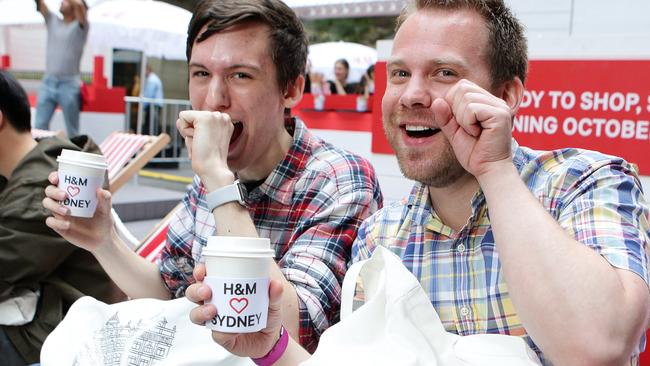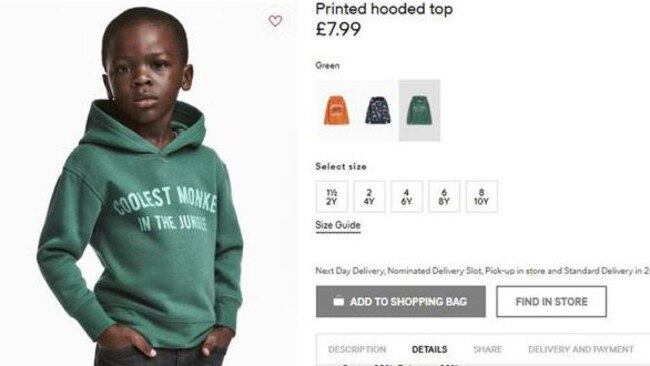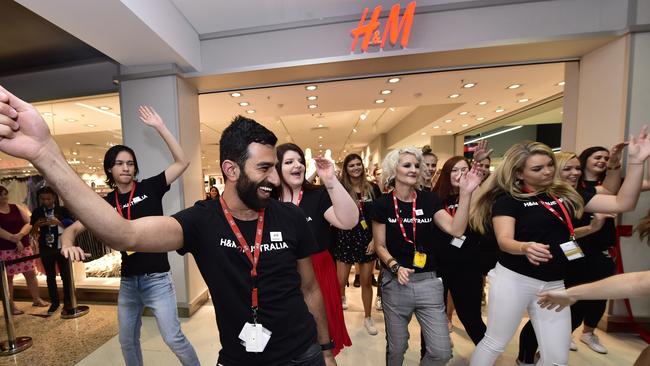‘They’re just not interesting anymore’: Fast fashion chain H&M’s woes in Australia
NOT so long ago, Australians couldn’t get enough of this retail giant’s cutting edge style. Now it’s in deep trouble.

Retail
Don't miss out on the headlines from Retail. Followed categories will be added to My News.
IF THE bosses of global fast fashion chain H&M had been in Sydney last weekend, they would have witnessed a depressing sight.
During the peak shopping time of Saturday afternoon, in its flagship Pitt Street Mall store, the lights may have been on but not many people were home.
When news.com.au visited the store only around 15 people were browsing the aisles on one floor, flicking through plain pastel coloured tees and blue striped business shirts.
“I remember when they used to sell man skirts. You wouldn’t see that now,” said one unenthused shopper.

Just a few doors down, at Spanish rival Zara, customers had to squeeze past each other to pose in front of floor to ceiling mirrors, eyeing up potential purchases.
The two brands are the undisputed leaders in fast fashion, their stores anchor the retail thoroughfares of cities worldwide, but something is very wrong at H&M.
Recently the retailer has been known more for its gaffes than its garb. On Wednesday, the ABC reported it was forced to admit it had used one of Melbourne musician Michael Katz’s pieces in an ad without seeking permission.
That came hot on the heels of another ad, which showed a black child sporting a hoodie emblazoned with the words “coolest monkey in the jungle,” and sparked accusations of racism. The furore led to an H&M store in South Africa being trashed.
But it’s in the hip pocket were H&M is really hurting.

Late last month, chief executive Karl-Johan Persson said the clothing behemoth had seen a sales slide in the most recent quarter of 4 per cent.
The company still made a profit of $800 million, but that was 34 per cent down for the same period. In contrast, Zara owner Inditex saw an 11 per cent rise in sales.
Together Zara, H&M and Japan’s Uniqlo still only account for barely 2 per cent of clothing sales but more than half the sector’s growth is due to the trio, according to Macquarie Equities.
In Australia, H&M’s sales for the past 12 months rose 31 per cent but much of that was on the back of an aggressive store opening program. In the three months to November, that momentum evaporated with sales down 6 per cent.
“The weakness was in H&M’s physical stores where the changes in customer behaviour are being felt most strongly and footfall has reduced with more sales online,” said Mr Persson.
The company said it would close underperforming stores, invest in online and focus on getting stock to stores faster.
But retail experts have told news.com.au the problems are more fundamental. That a brand that was once at the cutting edge of clothing was “confused” and was increasingly battling for sales with the likes of Kmart and Big W — and losing.

“I went to the launch of the iconic Melbourne H&M store in 2014 and we were all thrilled to have such a big brand coming to Australia,” fashion stylist and business strategist Amber Renae told news.com.au.
“I had a good look recently and they’re just not interesting anymore.
“It feels confused, like we’re not getting the good stuff they have in London or Paris. What they can’t sell elsewhere they get rid of in Australia.”
H&M isn’t the only retailer struggling in Australia. Gap shuttered its last shop a fortnight ago; Forever 21 looks to be on its last legs while the UK’s Topshop is clinging on with just three stores.
Domestic rivals aren’t faring much better. Wesfarmers has written down the value of discounter Target by $300m while angry investors are plotting to replace the entire board of department store Myer.
QUT Associate Professor and retail expert Gary Mortimer said retail’s woes were due to the tight pockets of Australian consumers.

“The H&M numbers point towards the challenges footwear and apparel retailers are facing and have for two or three years. It’s a ‘want’ rather than a ‘need’ category.
“Shoppers faced with sky rocketing electricity bills, fuel prices and health insurance costs going up are cutting their spending.”
But H&M’s strategy was also questionable, said Prof Mortimer.
“Zara has held its own — it’s very Milan, European inspired design. It’s probably not turning over the volume of H&M but when I walk into Zara it looks more edgy while H&M has trestle tables piled five high with shirts,” he said.
“In H&M, you now find $29 chinos and $19 shorts so it’s moved away from on-trend fashion to casual fashion.
“H&M can be about fashion or volume and discounts but not both,” he said.
H&M’s Australian sales are indeed higher than Zara or Uniqlo but it also has more stores. While Zara and Uniqlo have stuck to capital cities, H&M has gone on a store-opening spree with the famous red logo popping up in Toowoomba, Rockhampton and Wollongong. It will soon open in Mandurah in WA and the fashion capital of Tasmania, Hobart.

Ms Renae said it was a struggle to sell the same clothes to the inner city hipsters of Melbourne as well as to more casual Queenslanders.
“Being just in capital cities, Zara can be more trend-focused but if you’re selling in Toowoomba and Rockhampton you need to have a different strategy. You need to have more basics and that’s when you come up against Kmart and Big W and you can’t compete with those prices.”
Prof Mortimer said the company had to change to prosper.
“If I was running the business, I’d keep my brand to CBDs and big Westfields like Bondi and leverage that European image.
“I’d get the stores right before I revamped online. Don’t be surprised if we start hearing that H&M can’t support 32 stores in Australia.”
But Ms Renae said online was key and pointed to better service from rivals such as Showpo and Princess Polly.
“If they want to come back they need to reinvigorate their online presence. There’s currently no great shipping deals and no overnight delivery.”
But come back they could, she said.
“H&M have so much brand equity. Everyone knows them; everyone has and bit of H&M in their cupboard.”
H&M Australia would not comment to news.com.au.
Originally published as ‘They’re just not interesting anymore’: Fast fashion chain H&M’s woes in Australia



